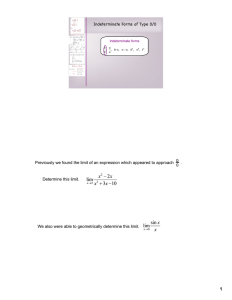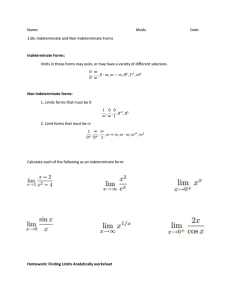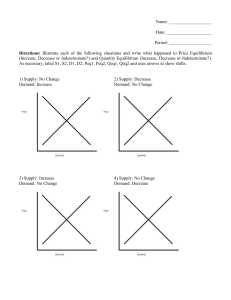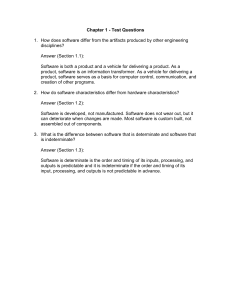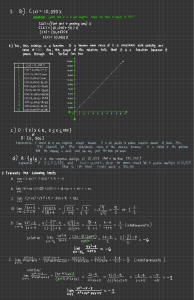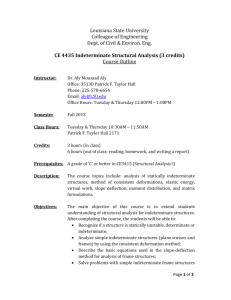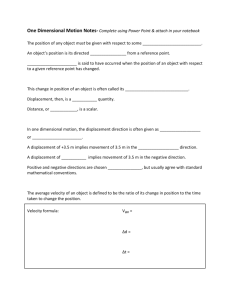Lecture Notes - prettygoodphysics
advertisement
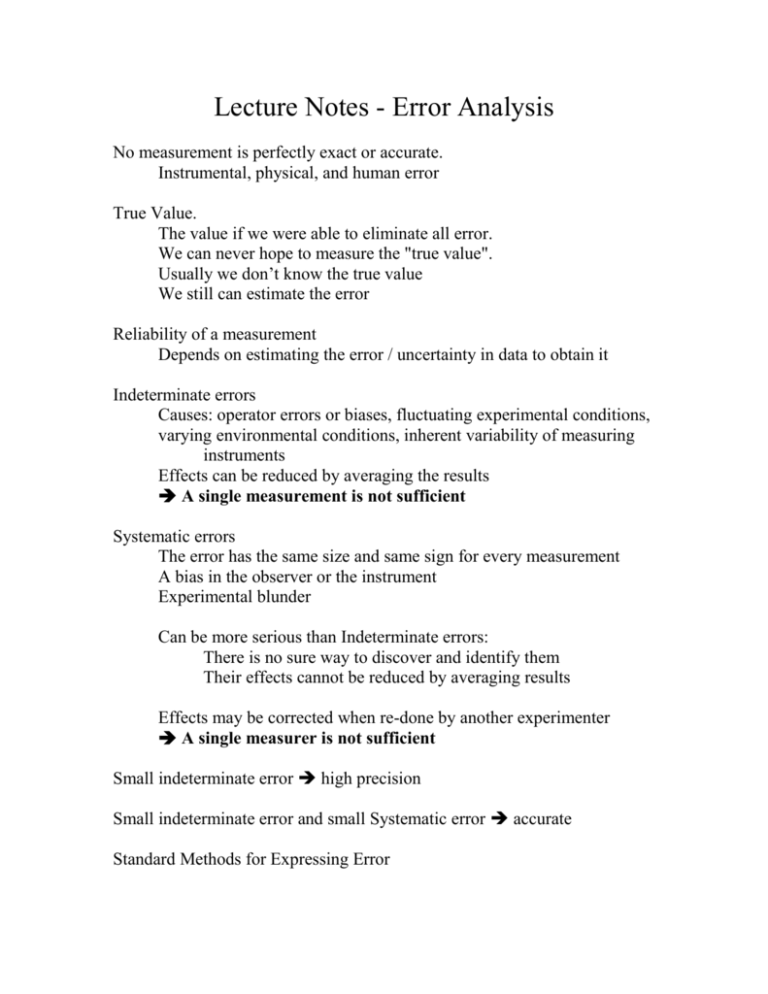
Lecture Notes - Error Analysis No measurement is perfectly exact or accurate. Instrumental, physical, and human error True Value. The value if we were able to eliminate all error. We can never hope to measure the "true value". Usually we don’t know the true value We still can estimate the error Reliability of a measurement Depends on estimating the error / uncertainty in data to obtain it Indeterminate errors Causes: operator errors or biases, fluctuating experimental conditions, varying environmental conditions, inherent variability of measuring instruments Effects can be reduced by averaging the results A single measurement is not sufficient Systematic errors The error has the same size and same sign for every measurement A bias in the observer or the instrument Experimental blunder Can be more serious than Indeterminate errors: There is no sure way to discover and identify them Their effects cannot be reduced by averaging results Effects may be corrected when re-done by another experimenter A single measurer is not sufficient Small indeterminate error high precision Small indeterminate error and small Systematic error accurate Standard Methods for Expressing Error Absolute measures e.g. 34.0 g 0.7 g All measurements are within 0.7 g Relative uncertainty absolute error / size of the measurement e.g. 0.7/34 = 0.02 or 2% e.g. Termperature measurement, instrument reliable to 0.5 degree? Relative or absolute measurement? Relative: 0.5% in measuring boiling point (100 degrees) 10% in measuring cold water at 5 degrees "Undefined" in measuring freezing point 0 degrees Nonsensical Relative measurement is important to characterize our labs Common sense and good judgment must be used Data Error propagate through the calculations to produce errors ion the results. It is the size of the data errors' effects on the results which is most important. E.g. Ave velocity = displacement / time Suppose time is 8.3 s. Suppose displacement is 1.000 0.0001 m. hw is velocity constrained? (Upper and lower limit) Suppose time is 8.3 .1 s. How is velocity constrained? (THEY TRY) We must assume a worst-case combination of signs. Sum and difference rule: add absolute error Product and quotient rule: Add relative errors Power rule: Multiply the relative error by the power. Holds also for fractional powers.
